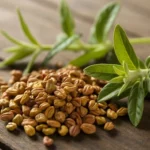Across rural landscapes in southern Europe, certain traditional agricultural systems still leave their mark on both culture and the environment. Among these is Simbramento, a centuries-old practice rooted in seasonal livestock movement and communal land use. While often overlooked in modern farming discussions, this method offers key insights into sustainable land management.
Defining the Practice
At its core, Simbramento refers to the seasonal migration of livestock—a structured, often community-driven movement of animals between grazing areas. Herders guide sheep, goats, or cattle from winter lowlands to summer highlands, following age-old patterns that reflect deep understanding of ecological rhythms.
The practice isn’t simply about relocating animals. It’s a well-coordinated system designed to protect pastures, prevent overgrazing, and promote land regeneration over time.
Historical Origins
Long before the rise of industrial agriculture, rural communities depended on shared land use agreements to survive. These were either formalized through charters or passed down through oral tradition. Such systems regulated when and where livestock could graze, ensuring that all families had fair access to resources.
In parts of Portugal and Spain, historical records describe how communities used grazing trails that spanned vast regions. This structured cooperation was essential, not only for land preservation but also for social cohesion.
Cultural and Ecological Impact
Beyond its economic value, Simbramento held deep cultural significance. Seasonal migrations were community events marked by rituals, songs, and storytelling. They helped strengthen social bonds and reinforced a shared respect for nature’s cycles.
Environmentally, the benefits of this method are clear:
- Improved soil health due to rotational grazing
- Biodiversity conservation through varied land use
- Reduced erosion and land degradation over time
These ecological advantages align well with today’s regenerative agriculture goals, which seek to rebuild natural systems while sustaining food production.
A Tradition in Decline
Despite its strengths, Simbramento has diminished significantly over recent decades. The shift toward urban living, the breakdown of communal land structures, and the spread of intensive farming methods have all played a role in this decline.
Many younger generations have moved away from rural life, and with them, the traditional knowledge associated with seasonal herding has begun to fade. Moreover, current agricultural policies often favor industrial-scale production, leaving little support for older, more sustainable methods.
Renewed Interest and Modern Relevance
Interestingly, the practice is beginning to regain attention. As climate concerns grow and monoculture farming shows its limitations, traditional systems like Simbramento are being re-evaluated.
In some European regions, environmental organizations are collaborating with local communities to restore grazing paths and educate new generations. These efforts often combine cultural tourism, ecological restoration, and sustainable livestock practices.
By framing Simbramento as both heritage and strategy, these initiatives give the practice renewed purpose in the 21st century.
Benefits Worth Preserving
There are several reasons why Simbramento continues to matter today:
- It supports low-impact farming that works in harmony with the land
- It fosters rural development by encouraging traditional skills
- It contributes to climate resilience by promoting natural cycles of growth and rest
Moreover, it provides a counterpoint to the high-input, high-output model of modern agriculture, which often damages ecosystems and depends heavily on synthetic interventions.
A Real-World Example
In Portugal’s Serra da Estrela region, a collective of farmers, historians, and environmental advocates has launched a grassroots project to revive Simbramento. They’ve mapped historical routes, restored communal grazing shelters, and trained young herders in sustainable practices.
The initiative has also introduced educational programs and eco-tourism experiences, allowing visitors to walk old herding paths and learn about the cultural and environmental value of seasonal grazing. Such integrated approaches ensure that tradition meets modern relevance.
Moving Forward
For Simbramento to thrive again, strategic action is needed. Governments can play a role by recognizing its ecological value and offering support through funding or legal protection of ancient grazing routes. Meanwhile, communities can document their unique traditions and pass them on through schools, festivals, and digital media.
The revival of such practices also requires reframing them—not as outdated customs, but as practical, adaptable models of sustainability rooted in generations of wisdom.
Conclusion
Simbramento may no longer be widespread, but its principles remain relevant. It teaches us the value of respecting natural rhythms, managing land collectively, and preserving cultural identity. In a time of environmental uncertainty, returning to these time-tested methods may be one of the most progressive steps we can take.







